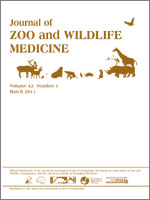Wildlife may be an important reservoir of antibiotic-resistant bacteria and resistance genes. In this pilot study, the prevalence and patterns of antimicrobial resistance in Escherichia coli cultured from wild herring gull (Larus argentatus) feces and human wastewater at Cape Cod, Massachusetts, USA, was compared. Antimicrobial susceptibility was tested using Kirby–Bauer disk diffusion with seven antimicrobial agents. A high proportion of antimicrobial agent-resistant E. coli isolates (59.2%) were detected in wastewater samples compared with a lower prevalence of 17.5% in gull feces. In addition, there was a large proportion of isolates with intermediate susceptibility (93.0%) in gull feces. Although similar resistance patterns and shared resistance genes suggest possible wastewater contamination of the local environment, the relatively low frequency of resistance and high prevalence of intermediate susceptibility detected in E. coli cultured from gull feces depict a complex model of antimicrobial resistance among E. coli strains of wildlife origin.
How to translate text using browser tools
1 March 2011
Pilot Study of Antimicrobial-Resistant Escherichia coli in Herring Gulls (Larus argentatus) and Wastewater in the Northeastern United States
Karen Alroy,
Julie C. Ellis
ACCESS THE FULL ARTICLE
Antibiotic resistance
coastal
Escherichia coli
Herring Gull
Larus argentatus
wastewater





